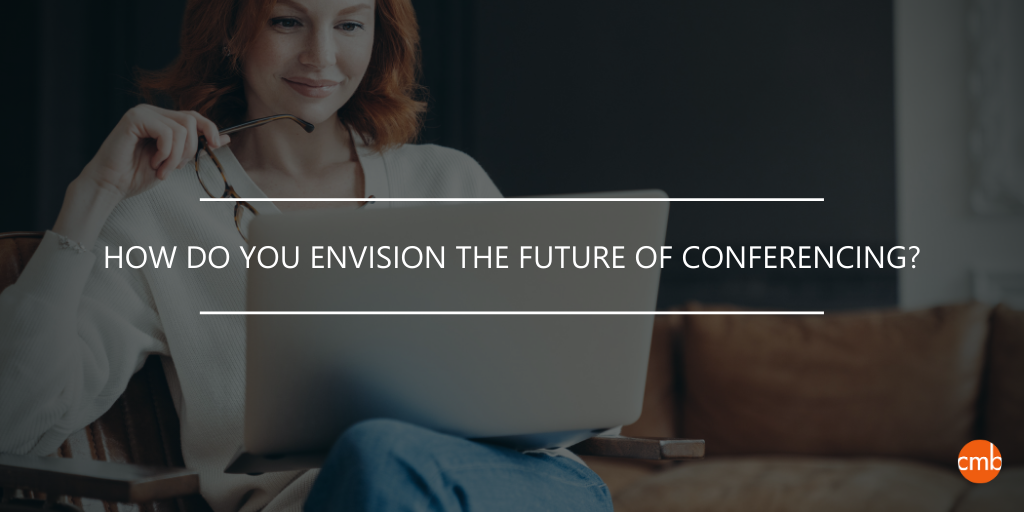A Reflection on Conferencing After Quirk’s Virtual 2021
I miss traveling for work, and yet I’m still noticing silver linings of virtual environments. A year ago, a subset of us traveled for Quirk’s Brooklyn, and a year later, I’m still in the silver linings mindset. Virtual conferences extend and deepen our sharing of content, enable our curiosity, and enhance some aspects of friendship.
- DEEPLY SHARING CONTENT: I always struggled with the “that session was great, you should have gone to it” type of conversation in the halls at conferences. In the virtual format, it’s so much easier to communicate real-time with your cohort using external chat platforms or texting. Because I’m not rushing between rooms through a labyrinth of booths saying “hi, hi, hi, talk later, hi” I also have time for deeper reflection. During Quirk’s Virtual 2021, I sent a note to a colleague saying: “Hey, I’m listening to Microsoft’s Simon Hough and Humayun Rashid talking beyond traditional stage gate (proceed, refine, stop concept). Their focus on enlisting stakeholders, co-creating concepts, focusing on inclusion/accessibility (expanding the notion of ‘blind’ to ‘not looking at the screen’) sounds like what we were talking about last week.” Had I been in-person, I may have dashed off a text to her, but she would have missed the richness of the content, all available to her in the virtual context. This ability to share and talk about the conference’s thought leadership while still in the moment has strengthened our consumption and action.
- CMB THREW A WATCH PARTY OF OUR OWN PRESENTATION INTERNALLY: We were humbled by the terrific attendance of our conference session. We’re so grateful. To celebrate and share our presentation more broadly, we threw a private “Watch Party” for our CMB colleagues the day after the conference ended. We invited our co-presenter and client, @SheilaDreyerVanBuskirk, which was a great opportunity for her to join in the CMB fun, as we listened and texted in the chat. It was a great reminder of how the virtual format of conferences this past year has made this content more democratized and accessible to audiences that may not have been as directly involved in the dialogue previously.
- CURIOSITY: ASKING DEEPER SIDEBAR QUESTIONS IS FAR EASIER: At an in-person conference, I’d stand in line with a thousand others (all tapping their feet) so that I could ask a question.The speaker would have just finished speaking and would have been rushed by the beginning of the next presentation. The environment isn’t great for asking deeper questions. During a virtual session, especially since it’s pre-recorded, I can take to Twitter or LinkedIn messaging, or just stay in the app, to ask questions and connect with folks. I can find the speaker (they’re not disappearing in the crowded hallways or retreating to their rooms), and the speaker can set the terms of their engagement (they can post content, simply like the comment, ask questions themselves).
For one example of a strand of thought I’m hearing, I’m super curious about the emerging dialogue about what agile research is and is not, and how some things bucketed as agile are really a category called adaptive research. Almost everyone claims they “do agile,” so @RoddyKnowles’s framework and perspective on the Feedback Loop describes what agile is and isn’t. Roddy talked about the common missteps with agile research being a) overextending the use case (usually because of speed), b) losing sight of the decisions to be made and/or c) falling into the “quick and dirty” trap. So, if it’s not agile, maybe it’s closer to “adaptive.” My colleague Adam Dietrich asked a question as a sidebar, and I tweeted back “do you want the link to @JanetStanden’s QRCA article on Adaptive.” We’re all so curious and we want to be sharing content, understanding context and triggering ourselves to notice trends in our broader industry, so the sidebar conversation is so much easier and richer in real-time.
- HOW DO YOU MAKE FRIENDS ON ZOOM? Our colleague @JessicaGaedke’s daughter recently posed this question to her. I found that Jess’ presentation at Quirk’s Virtual had a great hint for her daughter and the rest of us: focus on what matters to people (needs, pain points, routines, struggles, journeys, tensions, situations). In the presentation, Jess explained that design thinking begins with the user and those elements of human closeness. If we’ve learned anything from the pandemic, it’s that humanizing ourselves and authentically sharing our goals, needs, pain points, struggles, tensions and joys are all ways we connect, whether on or off Zoom. Specifically, some strategies we all can use include active listening, asking other people to share, following up with questions or thanks, taking turns, being silent, and plain old just being present to the conversation without multi-tasking. I also would add that I believe every online conversation has the potential to be just as amazing as an in-person one, so I come into each meeting with an open mind.
Finally, while I really, really look forward to returning to in-person conferences, I’m so grateful for virtual events. We all know, value, and love the great work of @DanQuirk, @SteveQuirk, and everyone who makes the Quirk’s events successful. Going forward, I think we’ll want a hybrid, with some staff remotely attending, listening and learning deeply, and some of the staff out on the road. Together, I think the online and the ‘boots on the ground’ colleagues will help our industry deliver even more value and impact.
To continue the conversations from Quirk’s Virtual 2021, please email Julie or connect with her on LinkedIn.
